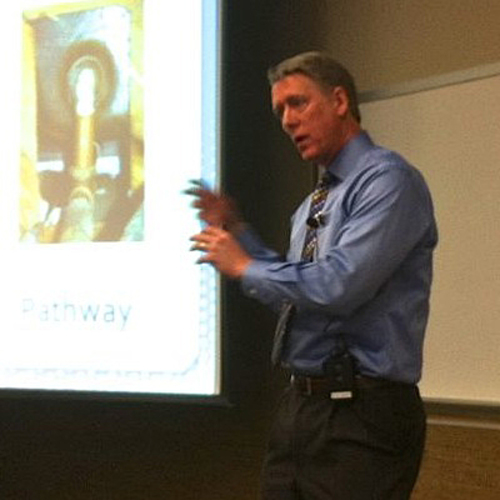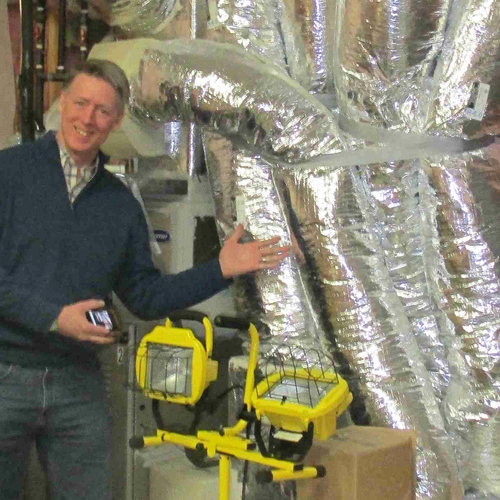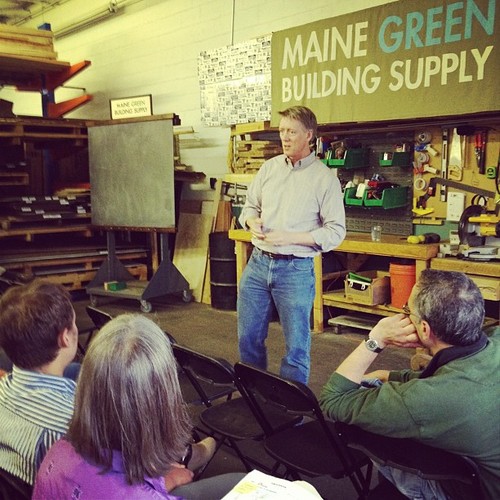
Allison Bailes’s new book, A House Needs to Breathe … Or Does It?, is the best available introduction to building science for residential designers, contractors, and owner-builders. GBA readers in search of a building science reference work should go out and buy a copy.
Bailes has been writing blogs for GBA for years; his inaugural article, Is There a Downside to Lumpy Attic Insulation?, appeared in January 2011. Bailes is a Georgia-based energy consultant, HVAC system designer, and blogger. He’s known for his folksy ability to explain complex building science topics with an entertaining (and occasionally corny) sense of humor—an approach that allows readers to grasp difficult concepts even as they occasionally roll their eyes.
A House Needs to Breathe … Or Does It? is a handsome 360-page hardback. It is generously illustrated with clear photographs and well labeled multi-color graphs. The book’s designers and editors deserve a share of the praise that the book’s author has justly earned.
While the book retains Bailes’s accessible style, the reference work is mostly sober and straightforward. To Bailes’s credit, his new book tones down his corny sense of humor (although he couldn’t resist his urge to republish the photo of a naked man jumping on a bed).
The starting point is physics
Many authors (including several GBA bloggers) have published books aiming to advise designers, builders, or homeowners on ways to build durable, comfortable buildings that use less energy than conventional buildings. Each book has a different focus. Compared to other similar books, Bailes’s book has fewer jobsite tips for weatherization workers and builders, and more information on the physics underlying building science. Bailes takes deep dives into issues like vapor diffusion, adsorbtion, and heat flow calculations.
Readers who are focused on green building and climate change remedies will find fewer chapters of interest than science geeks. For example, here’s what Bailes has to say about insulated concrete forms (page 181): “The foam on both sides gives you a lot of wall insulation.” (This statement is debatable.) Bailes continues, “Many ICFs have continuous R-22, but you can get forms with higher R-value. Because the walls are solid concrete with foam on both sides, it’s easy to make them airtight. They’re also quieter, more fire resistant, and more critter-proof than wood-frame homes. And because they’re concrete, the walls are strong.” All true. But in this discussion of ICFs, Bailes never mentions that because concrete has a very high level of embodied carbon, ICF homes are anathema to most green builders.
It’s comprehensive
Topics covered in Bailes’s book include:
- Creating a healthy house
- Energy fundamentals
- Residential energy use
- Controlling the flows of heat, air, and moisture in a building
- Understanding R-value
- Understanding window ratings
- Designing floors, walls, and roof assemblies
- Heat loss and heat gain calculations
- Designing HVAC systems (including duct systems)
- Whole-house ventilation
- Domestic hot water
Almost all of these topics (especially the sections on load calculations and HVAC system design) are covered in enough depth to ensure that this textbook will stay on readers’ shelves for future reference.
As a longtime member of the GBA community, Bailes is familiar with (and in many cases, responsible for overturning) common misconceptions that float around architects’ offices, lumberyards, and jobsites. That means that his book is blessedly free of errors. It’s a pleasure to read a book by an author who knows why it’s more important to control air flow than vapor flow; why powered attic ventilators are counterproductive; why operating an ERV doesn’t dehumidify indoor air; and why it is rarely a good idea to install a ductless minisplit unit in a bedroom.
Excellent explanations
Like most authors, Bailes has a few pet topics. He is especially good at explaining why uninsulated areas like attic hatches (or areas with thinner insulation) reduce the overall R-value of attic insulation more than most homeowners assume.
Similarly, his explanation of the diminishing returns of thicker layers of insulation (page 158) is noteworthy. He writes, “Sometimes people selling more expensive insulation try to talk their customers into going with less insulation than they should have. For example, take the chart in Figure 10.18.”

“The first thing wrong … is that the calculation should not start with an uninsulated wall. That’s not allowed by code, so why even look at it? … Doubling the R-value cuts the heat flow in half, no matter what the starting point is. The key point is that you shouldn’t base your decision on a salesperson’s claims about diminishing returns.”
He knows about cooling
Bailes’s advice is solid. He’s a trustworthy advisor on load calculations, equipment sizing, and duct design. Bailes lives in Georgia, so his advice is especially valuable for those who live south of the Mason-Dixon line.
It’s only natural for an author’s approach to energy issues to be shaped by the climate where the author lives, and Bailes’s hot-climate bias occasionally bobs to the surface. For those of us who live near the Canadian border, it can be startling to read (on page 135) Bailes’s description of the purpose of insulation: “The control layer for heat is insulation. Insulation helps keep heat out of the house.”
Cold-climate builders usually minimize north-facing windows, so it can be surprising for a northerner to read Bailes’s advice on north-facing windows. On pages 162 and 164, he writes, “North-facing windows are great for bringing in natural light because direct sunlight rarely comes in these windows … Put [the] majority of windows on north and south sides of [your] house.”
Northerners may also get a small jolt when they read (on page 273) that “Exhaust-only whole-house ventilation brings in outdoor humidity through leaks in the building enclosure.” That’s true in Georgia during the summer, of course; but when the outdoor air is cold, ventilation tends to lower, not raise, a home’s indoor humidity level.
As long as these examples of bias don’t lead to confusion—and in Bailes’s book, they generally don’t—there’s nothing wrong with them. Builders in Maine will certainly be more comfortable listening to the Pretty Good House team, and those who live in hot climates can listen to Bailes. That said, almost all of the advice in Bailes’s book applies to northern builders as well as southern builders.
Choice quotes
Bailes’s writing is often pithy. Here are some memorable quotes from his book:
- Page 76: “A good humidity threshold for deciding when to open the windows is a dew point of 60°F or below.”
- Page 82: “Condensation is the result of two separate properties coming into alignment: the dew point temperature of the air and the surface temperature of the material in contact with the air.”
- Page 121: “The key to solving humidity problems—or moisture problems in general—is to figure out where the moisture is coming from or why it’s not being removed.”
- Page 125: “Bulk water from bad flashing, stupid roof design, and failing gutters causes a lot more problems than water vapor.”
- Page 126: “Air sealing is the first step in controlling water vapor.”
- Page 131: “In really cold climates, you probably want to limit the [indoor] humidity to about 30 percent in winter. … In a humid climate [during the summer], 50 to 60 percent [indoor] relative humidity can be plenty comfortable.”
- Page 134: “Most vapor control is done with methods other than vapor retarders.”
- Page 183: “Make the attic floor as airtight as possible before even thinking about putting in more insulation.”
- Page 285: “Don’t install powered attic ventilators. If you have them, turn them off.”
- Page 220: “Inverter-driven minisplit heat pumps are the future for high-performance homes.”
- Page 236: “Bedrooms rarely justify their own ductless [minisplit] units because the loads are too small.”
- Page 268: “An air conditioner dries and cools the air. A dehumidifier dries and warms the air.”
- Page 313: “The best way to use solar energy to make hot water is with photovoltaics.”
Some questionable jargon
Anyone attempting to explain building science concepts to construction professionals needs to made decisions on construction vocabulary. Authors have to walk a tightrope, trying to be accurate with their vocabulary while avoiding jargon.
I’m not a fan of some of Bailes’s vocabulary choices. For example, he uses the phrase “liquid water control layer” to describe housewrap and roofing underlayment. I’m not sure the phrase is useful. For example, consider this sentence (page 68): “The liquid water control layer usually goes as far outside as you can get it. That means just under the cladding in most cases.” Bailes’s observation about “under the cladding” applies to walls, but is not particularly accurate for roofs.
Elsewhere, he refers to a water-resistive barrier (WRB) as a “drainage plane,” even when siding is installed tight to the housewrap. When siding is installed this way, I don’t think that the housewrap can be called a “drainage plane.” (Drainage requires a rainscreen gap.) I would just call it a WRB, not a drainage plane.
Similarly (for example, on page 167), Bailes make frequent reference to “shearing layers,” an example of jargon borrowed from Stewart Brand. I don’t find the phrase particularly useful.
Although I may disagree with Bailes’s vocabulary decisions, they aren’t a major flaw. In all cases, Bailes guides readers by defining his terms.
Impeccable logic, but hard to implement
Readers are lucky that Bailes is smart. That’s important for a technical author. He looks at problems analytically and comes up with excellent solutions, all of which can be justified by logic. That said, Bailes’s logical advice isn’t always easy to implement.
For example, on page 26, he writes, “One class of chemicals to look out for is called volatile organic compounds (VOCs). … Now some products even come in zero-VOC lines. That doesn’t mean they don’t affect the air, though, because they could still contain another class of materials called semi-volatile organic compounds (SVOCs).” Unfortunately, these facts end up raising readers’ anxiety without providing an obvious remedy.
On page 69, Bailes tells contractors that every job side needs a “control layer enforcer.” (That’s jargon for a person in charge of maintaining the integrity of the building’s air barrier.) It’s excellent advice, but hard to implement. It’s extraordinarily rare to find a residential construction site in the U.S. that has a “control layer enforcer.”
On page 265, Bailes provides advice on how to figure out when it’s time to change a furnace filter, a routine chore for most U.S. homeowners. The best way, Bailes says, is to measure the pressure drop across the filter using a manometer. When the pressure drop across the filter has doubled from the measured pressure drop for a clean filter, it’s time for a new filter. Here’s what you do: “You have to drill a hole in the return ductwork on each side of the filter. … Each probe has a piece of hose connecting the probes to the input and reference pressure taps on the gauge. … You can get a decent analog pressure gauge for about the cost of this book [$69].” Bailes is right, of course. But only a few nerds will take his advice.
The tension I’m talking about—between accurate advice and ease of implementation—is a topic worthy of further discussion, and I’ll be returning to the topic in a future article.
The book is impressive
Bailes’ book is the result of years of hard work, and it’s a monumental accomplishment. I’m really pleased that he scaled the mountain. Everyone in the construction industry—including architects, builders, and HVAC contractors—will benefit from reading this gem of a book.
A House Needs to Breathe … Or Does It? is available for $69 from Energy Vanguard or Amazon. People who use the code 10gba1130 at checkout will get $10 off. The discount expires at the end of 30 November.
_______________________________________________________________________
Martin Holladay is a retired editor who lives in Vermont.
Weekly Newsletter
Get building science and energy efficiency advice, plus special offers, in your inbox.















6 Comments
Congratulations to Allison! The books that have been published by authors associated with GBA form a really impressive collection.
If you have The Musings of an Energy Nerd, The Pretty Good House, and now A House Needs to Breathe, you have a really comprehensive library of building science.
Just diving in this week. It's going to be an essential reference for a lot of builders and designers. The perfect book for GBA readers who are BS obsessives and are looking to deepen their scientific understanding.
Full disclosure - i'm an old friend of AB3's (although he's probably older) and donated to his book-raising. But I'd already learned a tremendous amount from him and was not surprised by great the book is.
Book is very readable. Does not cover entropy which is the concept that job sites getting messier over time unless you put some energy into them. Better than reading my old Chemical Engineering textbooks!
I have been searching for a reliable BS book and had my eyes on “Buildings Don’t Lie” by Henry Gifford, any unbiased thoughts? Almost same price point. Thanks.
I'm with you Malcolm. My first BS book was Building Science for Building Enclosures authored by Eric Burnett and John Staube (2005). It was a great introduction to BS which set me on this path. However, it was a textbook not for beginners and with no engineering background. Musings of an Energy Nerd, Pretty Good House and A House Needs to Breathe has helped me, as a home builder, deliver the affordable, safe and healthy homes my customers deserve and expect.
Thank you all, and there are so many, for the valuable resources you have provided to the construction industry and its buildings' occupants.
johnholahan,
I went to architecture school in the early 80s and came out with next to no technical knowledge. Thank God things have changed and you can now get so much good information, whether you are a professional or just have an interest in the subject. We are lucky!
Log in or create an account to post a comment.
Sign up Log in